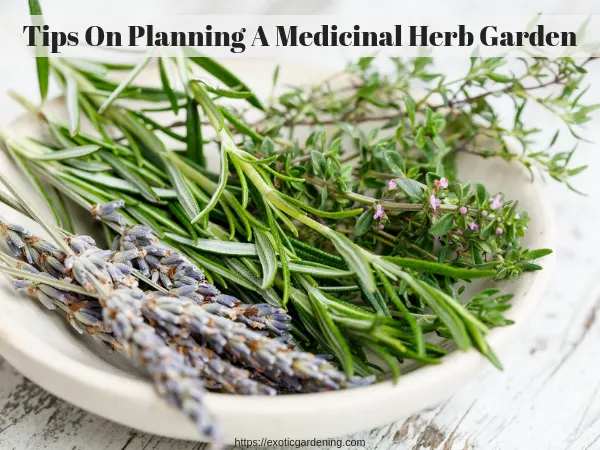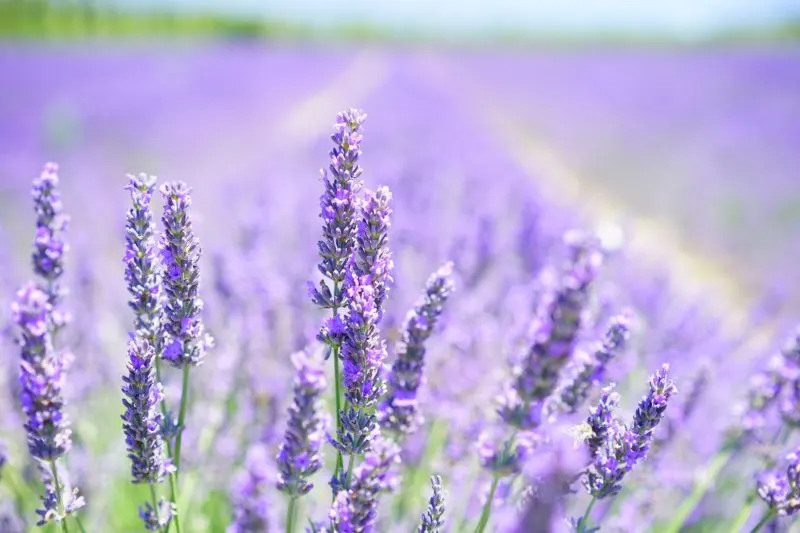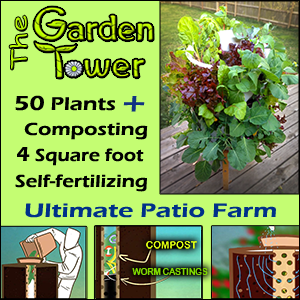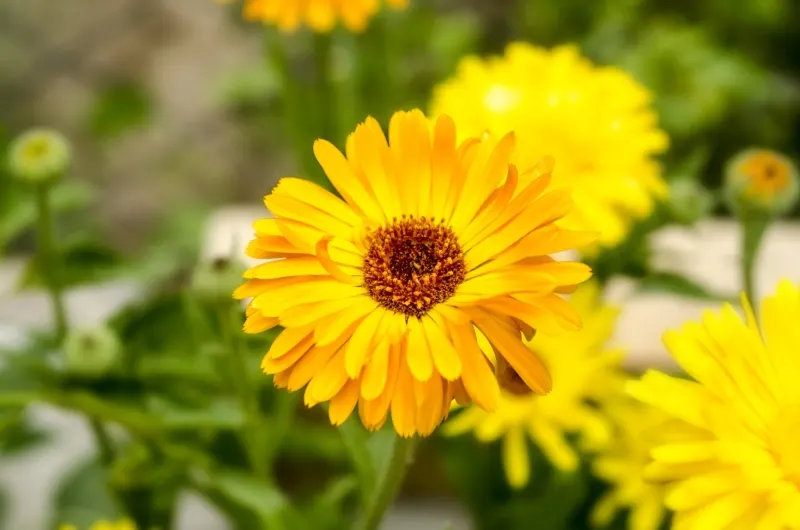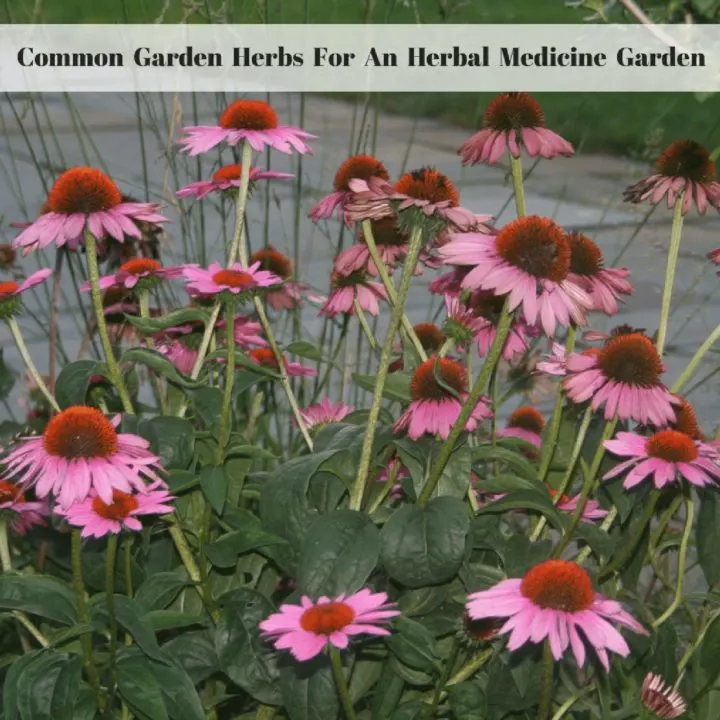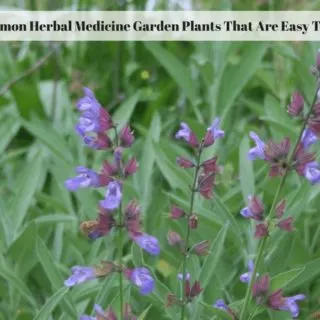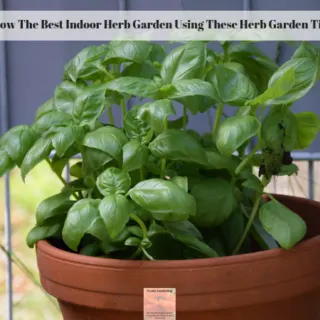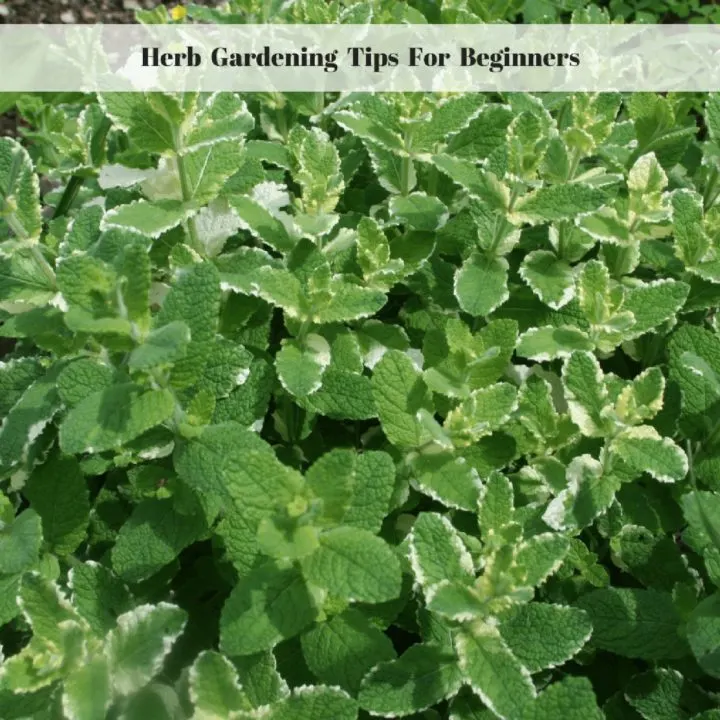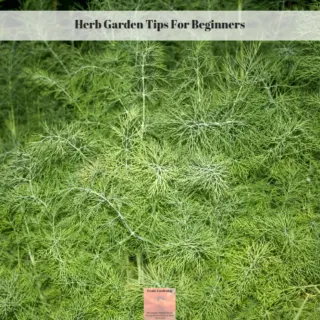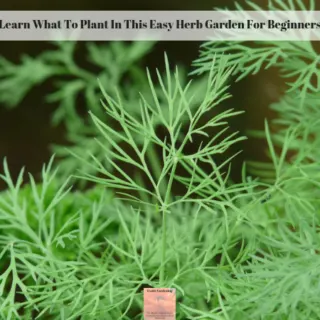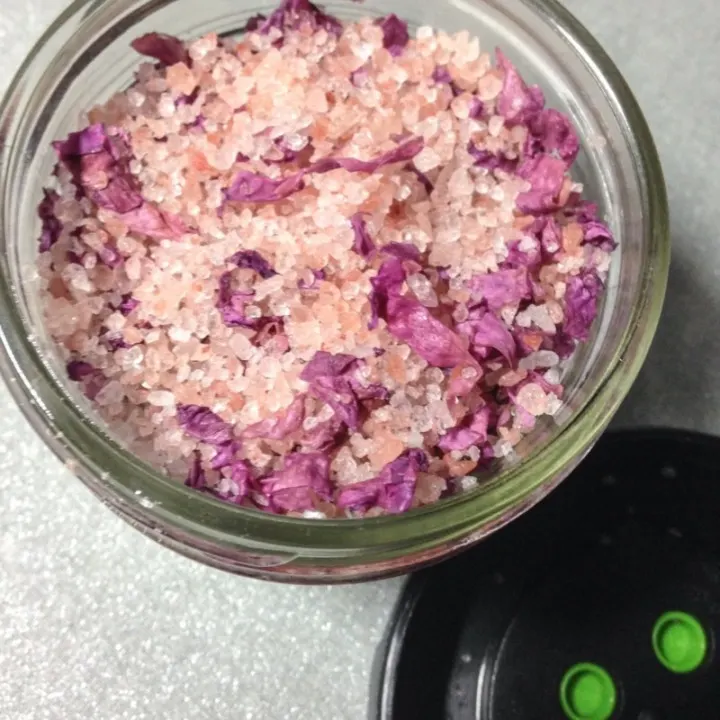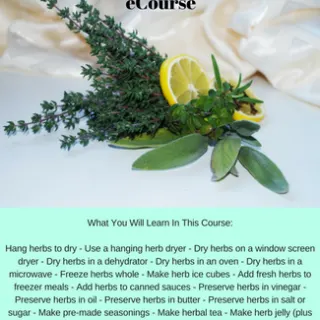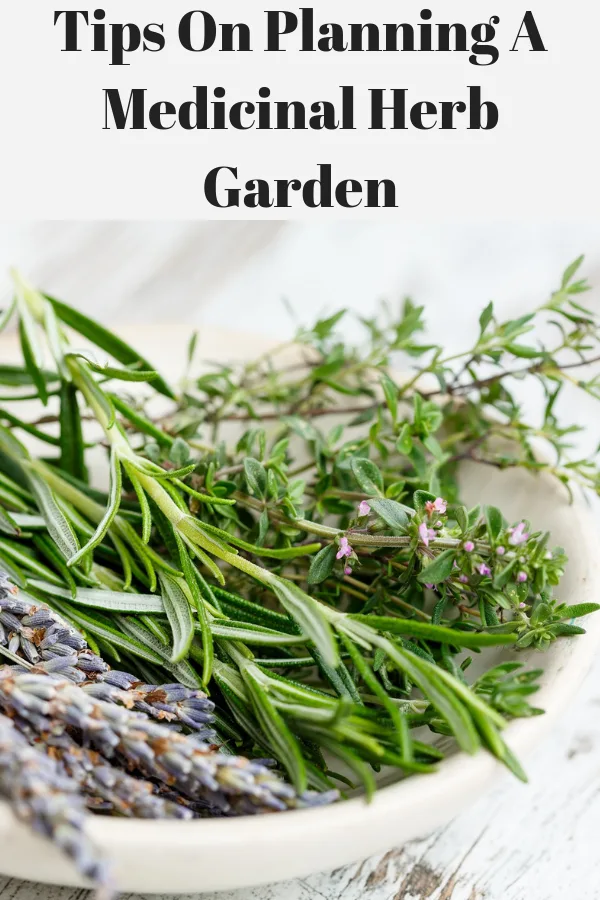Have you ever wondered how to start planning a medicinal herb garden?
The Basics Behind Planning A Medicinal Herb Garden
With more people than ever consuming herbs and using herbal remedies for common ailments, starting a medicinal herb garden makes sense.
Many people consider the use of herbs part of a healthy lifestyle.
Herbal remedies are found in numerous household medicine cabinets right along side aspirin or cough medicine.
In many ways, planning a medicinal herb garden is no different than planning any other type of garden.
However, planning a garden that looks good and produces well can be tricky, especially if you are a beginner and have no clue where to start.
Luckily you can find all of the requirements for planning an herb garden, successfully growing that herb garden and what to use some of the herbs for once they are ready to harvest below.
These tips are designed to educate both beginner gardeners and those that have been gardening a long time, but maybe have not planned a garden from scratch or grown medicinal herbs.
How To Choose Herbs For A Medicinal Garden
Before you begin to plot out the area you are growing to plant your medicinal herb garden it helps to know what medicinal herbs are available in your area, especially if want to start with plants instead of seeds.
A good place to begin is your local garden center or big box store if you do not have a local garden center.
Of course, if you are lucky enough to have a dedicated herb nursery, that is an even better place to shop.
Take the time to visit and find out what herbs are available that are suitable for your area.
Keep in mind that as the season progresses the availability of some of the herbs might change.
Understanding what you can buy locally that is hardy in your area is important, especially if you are planning an outside herb garden.
If you are planning an inside herb garden, since you control the atmosphere, you can choose whatever herbs you like without worrying about them dying off when fall arrives.
Choose The Right Spot For Your Medicinal Herb Garden
It is important to be realistic about the plants you choose, especially if you are growing them outside.
Take the time to really study your property and find the right spot to start your medicinal herb garden.
Watch for areas that are sunny, shady or have partial sun and be sure to notice if those areas get morning or afternoon sun.
It is important to understand the type of soil that occurs in your garden naturally and how well the various areas you are considering planting your medical herb garden drain.
Once you have studied your property and mapped out the various areas, pick the sunniest spot because most herbs need at least four to six hours of full sun per day.
Of course there are exceptions to the rule, so make sure the herbs you want to grow are ones that need sun.
If not, choose an area that gets just the right amount of sun or shade for the herbs you plan to grow.
While most people prefer planting a garden on level ground, if you have an area that naturally slopes leaving it as it is and adding in steps might be best.
If the area is just not level due to the ground settling or underground animals making tunnels, go ahead and level it.
It is best to make sure the site you choose is sheltered from high winds.
If your soil is a bit heavy or if you have clay soil, add lots of compost when preparing your site which will help loosen the soil and add nutrients.
Compost also helps with drainage.
For those who do not have a sunny area or who do not wish to plant their medicinal herbs in the ground, consider planting them in containers.
This makes it easy to move the containers around to follow the sun, protect the herbs from extreme weather or bring them indoors come winter.
The added height of a container also makes harvesting easier especially for people who have trouble bending or getting down on the ground.
How To Choose A Design When Planning A Medicinal Herb Garden
The next step is to choose a design for your medicinal herb garden.
If you have other types of gardens on your property, take a look at them.
Are your other gardens formal or informal?
Now think about if you want your medicinal herb garden to match their style.
Of course, if this is your first garden, then you need to decide if you prefer a formal, neat garden or something that is more informal.
You definitely want your medicinal herb garden to look good in relationship to your home and property.
Books and magazine are great places to find inspiration, just be sure to look for ones that show off herb gardens, even if they are not medicinal in nature.
If you are creating a formal herb garden, plant in straight lines and geometric shapes then frame the gardens with low hedges and pathways.
A fountain, bench or topiary shrubs are almost always used as the main focal point in formal gardens.
Another option is to arrange the layout of your medicinal herb garden around a central axis such as an old wagon wheel.
Then plant one type of herb in each block.
Choose herbs with bold color or texture to really showcase the different sections of the wheel.
A formal garden is labor intensive and creating it can be expensive, but if that is what you want, go for it.
Informal gardens flow with the layout of the land.
They have curved beds and walkways that feel natural when you wander through them.
An informal medicinal herb garden requires less initial work, is easier and cheaper to maintain, but usually does look a bit messy.
Think about what you can live with before you decide on what style of garden to plant.
Make The Final Decision On What Herbs To Grow
Once the style of garden is decided on and the location, it is time to decide which medicinal herbs to plant.
The best way is to start on paper by making three different columns.
Column one is the medicinal herbs you use the most and really want to grow.
Column two is the medicinal herbs you want to grow and might use.
The third column is for those that are not necessary at this time.
For those who are just learning how to garden or who have never grown herbs before, it is recommenced to choose three to five plants depending on how much space you have.
The reason for this is that starting with just a handful of plants makes growing and harvesting more manageable in the beginning.
As your knowledge and confidence grows, feel free to add more plants to your medicinal herb garden.
Document The Information About Your Medical Herb Garden
Before you plant your herb garden, get a piece of paper and draw your garden out.
Make a note where each herb is planted, then look at the tag that came with your herb and jot down the pertinent information on that tag.
Things to take note of are the hardiness of the plant, the botanical name and the preferred growing conditions.
A small spiral notebook is a good place to make comments on the care of each of your herbs.
Do keep in mind that if this spiral notebook is taken into the garden it might get soiled, so using a piece of paper and then transferring the information into the notebook might be best.
Planting And Caring For Your Medicinal Herb Garden
Be sure to also take note of the final height of each plant and position them so the tallest plants are near the back or center of the medicinal herb garden.
This makes enjoying them and harvesting them more enjoyable, plus you don't have to worry about the taller plants shading the smaller ones.
Finally make sure to water your herb garden as needed.
A newly planted herb garden requires more water than an established one because once established most herbs are pretty drought tolerant.
Herbs also do not require large amounts of fertilizer.
It is also best to apply compost in the spring and fall.
Keep your herbs trimmed to keep them compact, unless they are meant to flower as is the case with calendula, chamomile and several other herbs.
It is also best to harvest the herbs before they flower, unless the flower is what you want for medicinal purposes.
Harvest the herbs by removing ⅓ of the plant material early in the morning as soon as the dew has dried.
It is best to harvest after several dry days instead of right after a rainy day or night.
This is when the essential oils in the plants are the strongest.
The Truth About Medicinal Herbs
Once you plant your medicinal herb garden and word gets around, expect to hear some negative comments because herbs for medicinal purposes are sometimes thought of as quackery.
However, there is a relationship between herbs and modern medicine.
People all over the world historically have use herbs as well as berries, seeds, roots, leaves, bark and flowers to treat everything from a cold to indigestion to abdominal pain.
While there is no concrete proof of exactly how herbs work, they are the basis for modern medicine.
There are a variety of compounds found in plants and it can be hard to separate the active ingredients.
However, research is showing that there is value to using them for preventative maintenance as well as treating some conditions.
Once scientists learned to extract certain compounds from plants and create pills or other types of modern medicine, the use of herbs as medicine dropped off.
Herbal remedies fell into hearsay but I recent years they have been making resurgence within the medical community.
People want to return to their roots literally and many doctors are on board allowing people to use natural remedies instead of or right alongside more conventional ones.
A Few Easy To Grow Medicinal Herbs And Their Potential Uses
Below are twelve herbs that work well in a medicinal herb garden as well as their potential uses.
Keep in mind to start with just a few and expand your garden as time, space and expertise allow.
- Peppermint - This herb is great for making candy but it has several medicinal purposes as well. Steep the leaves in tea to make a peppermint tea. The tea is said to be a muscle relaxant, antispasmodic and antacid. It is also used to settle upset stomachs. Use leaves on the chest as an expectorant.
- Calendula - The flower is used as a healing cream to fight inflammation and to find relief from poison ivy.
- Garlic - Garlic tastes great on meats and adds a delicious flavor to stews. Many people eat the fresh cloves to help boost the immune system naturally and it is reputed to help lower blood cholesterol. Garlic has also been used as an antibiotic.
- Yarrow - This root can be used to stop bleeding externally. Also used as an antibiotic when ingested. Combine with lavender to repel insects.
- Lavender - The flowers smell great. Lavender essential oil is used to relieve headaches and lower stress. Lavender has also been used as an antibiotic and anti-fungal.
- Chamomile - One popular use of chamomile is to steep the leaves in a tea to use as a sedative to help you sleep better. It is also used as an anti-inflammatory. People with hay fever are advised to avoid using chamomile.
- Ginkgo biloba - We have all heard this one helps improve memory, however many people also use it as a supplement to help fight the effects of free radicals in the body.
- Echinacea - Echinacea has a reputation as being an immune booster. It is often used to help fight off the effects of a cold or sore throat.
- Ginseng - Ginseng is used to help boost the immune system.
- Ginger - Eating fresh ginger root can help fight upset stomach and digestive problems. Use it in tea with a bit of honey or make a ginger bug brew then add some of that to your tea.
- Tea Tree Oil - Tea tree oil is used as an expectorant, an anti-inflammatory and has anti-bacterial properties.
- Nettle - Nettle is used to fight muscle spasms like menstrual cramps. Many people also eat nettle.
A Word Of Caution About Using Medicinal Herbs
When using herbs for medicinal purposes make sure to take the proper dosages and pay attention to what your body is telling you.
Also, check with your doctor for any interactions with prescription medications or other issues.
Since I am not a doctor, the uses mentioned in this article are for informational purposes only and are not intended to be used to diagnose.
It is always best to talk to a licensed medical doctor about any medical problems you are encountering and follow their advice.
There is nothing wrong with letting them know you are growing a medicinal herb garden and prefer to use what you grow, but realize that herbs do take longer to work than conventional medications.
Tips On Planning A Medicinal Herb Garden
Check out these tips for planning a medicinal herb garden. Learn how to choose what herbs to get started with, how to choose the right site and more.
Growing Ginger: A Homeopathic Medicine
There are so many reasons for growing ginger in your garden from edible or medicinal uses to the showy, often fragrant flowers.
Edible And Useful Plants You Can Grow
Do you want to grow a garden that is not only beautiful but also practial?
Then this course is for you!
In it I cover a variety of both cultivated plants and wild plants that grow in your garden regardless of if you want them there or not!
Learn how to get rid of these plants by using them instead of killing them.
Plants covered include:
Soapwort
Rosehips
Yucca
Redbud
Nasturtium
Milkweed
Cattails
Dandelions
Sheri Ann Richerson
Do you love fresh herbs but wonder if there is an easy way to preserve them for the winter?
Do you seek other ways to use herbs other than just as a seasoning on food?
There are so many ways to preserve herbs for winter use – from various methods of drying them to freezing them, but it doesn’t end there.
Some of the best ways to preserve herbs in right in the foods you would normally incorporate herbs into – pre-made seasonings, teas, butter or oil.
Then this is the course for you!
What You Will Learn In This Course:
Hang herbs to dry
Use a hanging herb dryer
Dry herbs on a window screen dryer
Dry herbs in a dehydrator
Dry herbs in an oven
Dry herbs in a microwave
Freeze herbs whole
Make herb ice cubes
Add fresh herbs to freezer meals
Add herbs to canned sauces
Preserve herbs in vinegar
Preserve herbs in oil
Preserve herbs in butter
Preserve herbs in salt or sugar
Make pre-made seasonings
Make herbal tea
Make herb jelly (plus tips on how to use these)

